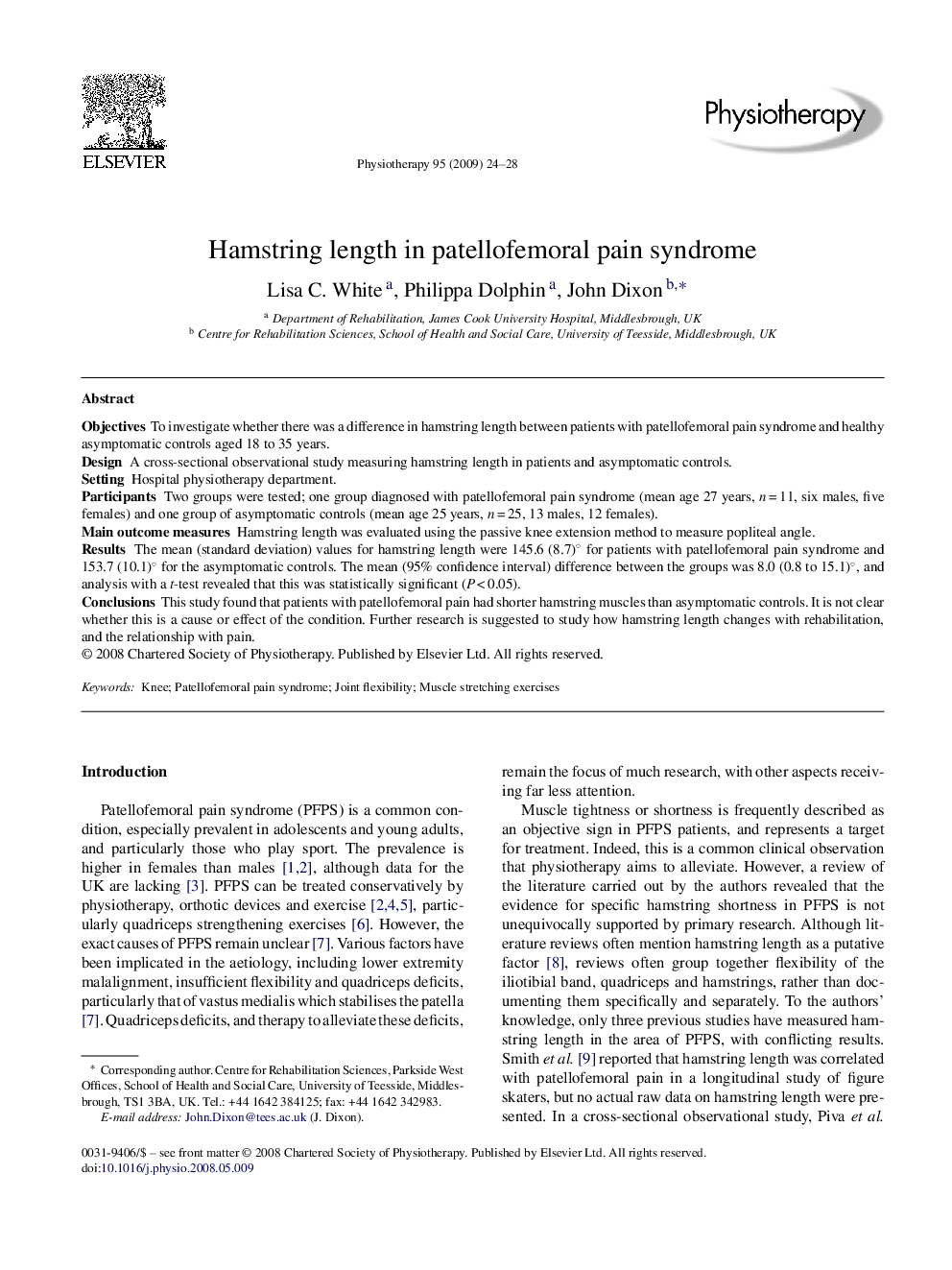| Article ID | Journal | Published Year | Pages | File Type |
|---|---|---|---|---|
| 2627921 | Physiotherapy | 2009 | 5 Pages |
ObjectivesTo investigate whether there was a difference in hamstring length between patients with patellofemoral pain syndrome and healthy asymptomatic controls aged 18 to 35 years.DesignA cross-sectional observational study measuring hamstring length in patients and asymptomatic controls.SettingHospital physiotherapy department.ParticipantsTwo groups were tested; one group diagnosed with patellofemoral pain syndrome (mean age 27 years, n = 11, six males, five females) and one group of asymptomatic controls (mean age 25 years, n = 25, 13 males, 12 females).Main outcome measuresHamstring length was evaluated using the passive knee extension method to measure popliteal angle.ResultsThe mean (standard deviation) values for hamstring length were 145.6 (8.7)° for patients with patellofemoral pain syndrome and 153.7 (10.1)° for the asymptomatic controls. The mean (95% confidence interval) difference between the groups was 8.0 (0.8 to 15.1)°, and analysis with a t-test revealed that this was statistically significant (P < 0.05).ConclusionsThis study found that patients with patellofemoral pain had shorter hamstring muscles than asymptomatic controls. It is not clear whether this is a cause or effect of the condition. Further research is suggested to study how hamstring length changes with rehabilitation, and the relationship with pain.
